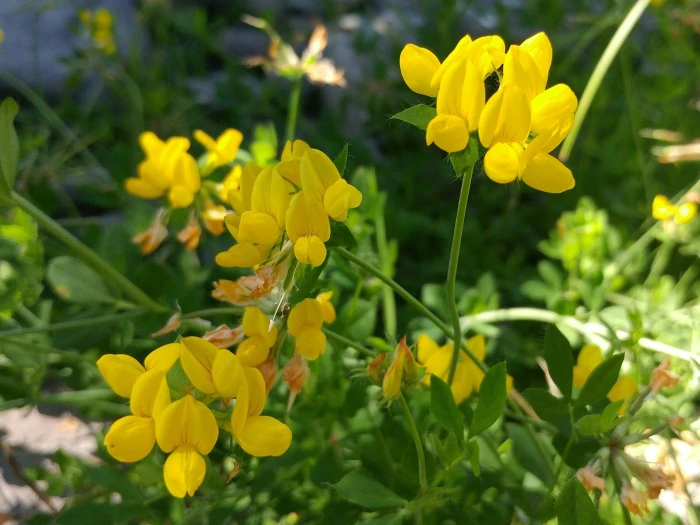Greater Bird’s-Foot-Trefoil
(Lotus pedunculatus)
Greater Bird’s-Foot-Trefoil (Lotus pedunculatus)
/
/

© Casey H. Richart
CC BY 4.0
Image By:
© Casey H. Richart
Recorded By:
Copyright:
CC BY 4.0
Copyright Notice:
Photo by: © Casey H. Richart | License Type: CC BY 4.0 | License URL: http://creativecommons.org/licenses/by/4.0/ | Uploader: pileated | Publisher: iNaturalist |
























Estimated Native Range
Climate Requirements for Brookings, South Dakota
| This Plant | Your Site | Plant Suitability for Your Location | ||
|---|---|---|---|---|
| • Precipitation | 9" - 181" | 23" | Your precipitation may be insufficient for this plant. Irrigate N" / year. | Irrigate N" / year |
| • High Temp. | 52°F - 97°F | 83°F | Your summer temperatures are normal for this plant. | Excellent |
| • Low Temp. | 3°F - 62°F | 1°F | Your winter temperatures may be too cold for this plant | Too cold |
This plant should grow well at your location with about N inches per year (Y minutes per month) of irrigation.
Summary
Lotus pedunculatus, commonly known as Greater Bird’s-foot-trefoil, is a perennial herb that is native to wet meadows, marshes, and riverbanks across Europe. It is characterized by its sprawling habit and trifoliate leaves, with each leaflet resembling a bird’s foot. The plant typically grows to a height of 10-60 cm (4-24 inches) and spreads out to form dense patches. Greater Bird’s-foot-trefoil produces bright yellow flowers from June to September, which are arranged in umbels and are highly attractive to pollinators. The flowers give way to slender, elongated seed pods that resemble a bird’s foot, hence the common name.
This species is valued for its ability to thrive in wet conditions and is often used for soil stabilization and as a forage plant for livestock due to its high protein content. It is also appreciated for its ornamental qualities in water gardens and naturalistic plantings. In cultivation, it prefers full sun to partial shade and requires consistently moist to wet soils. While it is not particularly drought-tolerant, it can withstand occasional flooding. Gardeners should be aware that it can spread aggressively by rhizomes and may become a nuisance in some settings.CC BY-SA 4.0
This species is valued for its ability to thrive in wet conditions and is often used for soil stabilization and as a forage plant for livestock due to its high protein content. It is also appreciated for its ornamental qualities in water gardens and naturalistic plantings. In cultivation, it prefers full sun to partial shade and requires consistently moist to wet soils. While it is not particularly drought-tolerant, it can withstand occasional flooding. Gardeners should be aware that it can spread aggressively by rhizomes and may become a nuisance in some settings.CC BY-SA 4.0
Plant Description
- Plant Type: Herb
- Height: 1-2.5 feet
- Width: 1-3 feet
- Growth Rate: Moderate
- Flower Color: Yellow
- Flowering Season: Spring
- Leaf Retention: Deciduous
Growth Requirements
- Sun: Full Sun, Part Shade
- Water: High
- Drainage: Fast, Medium
Common Uses
Border Plant, Erosion Control, Water Garden
Natural Habitat
Wet meadows, marshes, and riverbanks across Europe
Other Names
Common Names: Greater Bird’s-foot Trefoil, Marsh Bird’s Foot Trefoil, Large Bird’s Foot Trefoil
Scientific Names: Lotus pedunculatus, Lotus corniculatus subsp. decumbens, Lotus corniculatus var. pedunculatus, Lotus granadensis, Lotus nummularius, Lotus uliginosus var. brachycarpus, Lotus uluginosus
GBIF Accepted Name: Lotus pedunculatus